Preparing outdoor tropical plants for winter
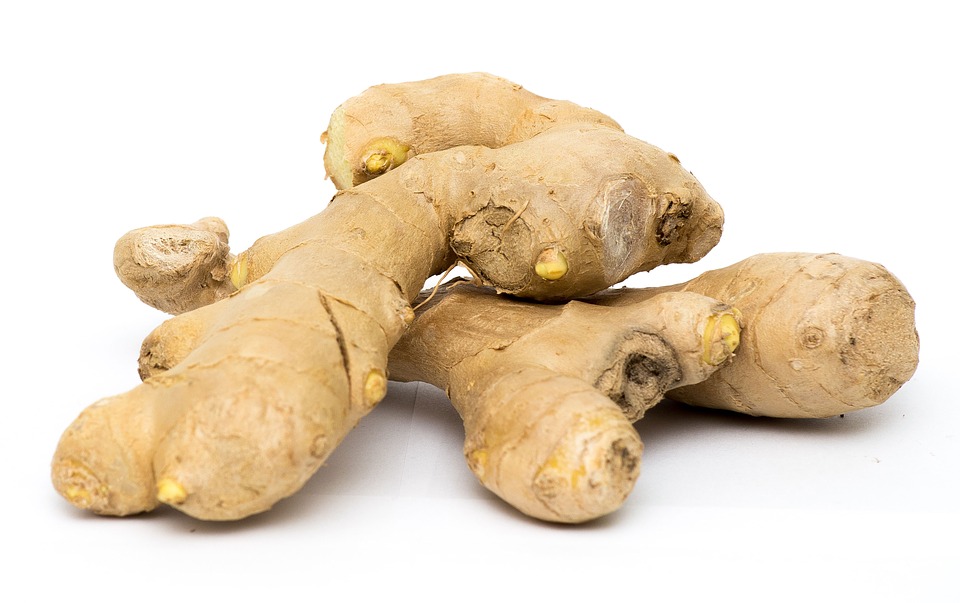
Today is the day I started bringing in my tropical plants. Two of them were ready for harvest.
Here's a list of the things I have been growing outside that must be brought indoors for the winter:
- lemon
- lime
- ginger
- turmeric
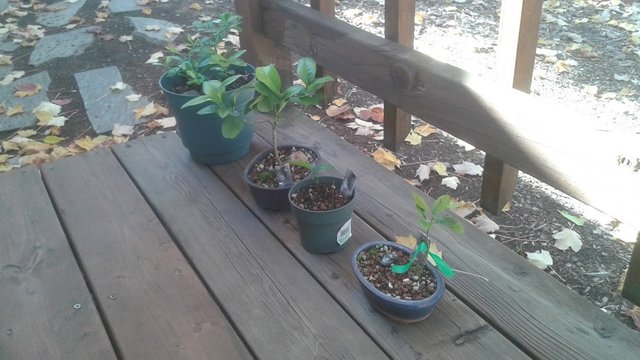
Young citrus treees. Lemon and Lime.
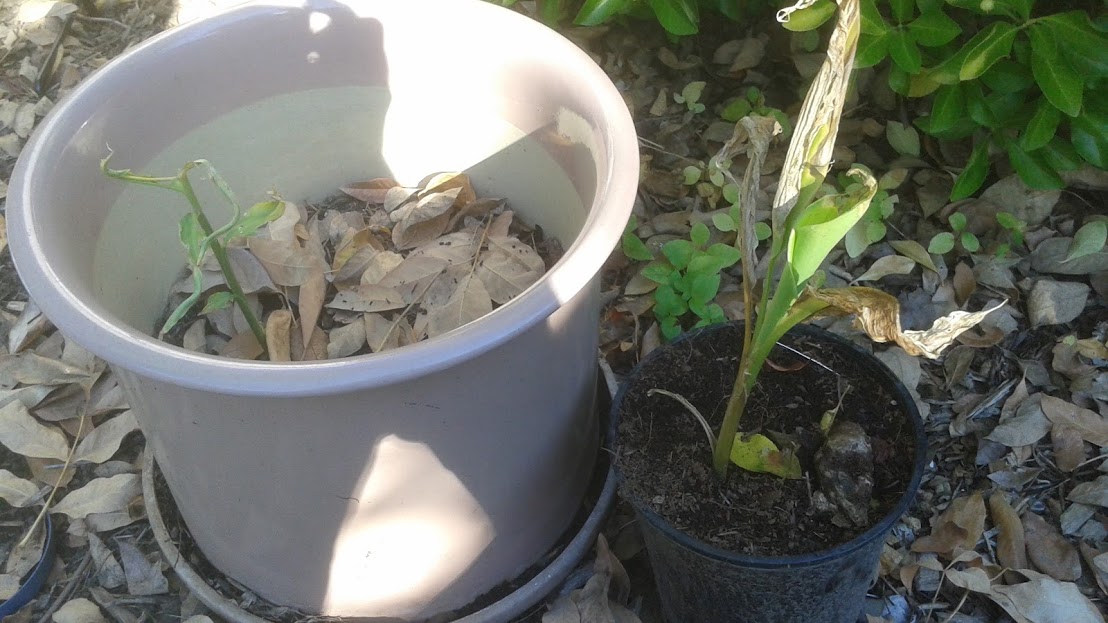
Ginger
Two of these citrus trees, pictured above, are entering their first winter and I want them to have a comfortable transition as I prepare to move them indoors. Before temperatures hit the low 30's, I am moving them into the garage for a few days. It will still get cold inside the garage, but not nearly as much because they will be shielded from the wind. They won't be getting any sunlight in the garage, so I won't be keeping them there for more than a week.
Outside planted trees in pots collect all manner of fungus, moss, invasive seeds, bacteria, insects, worms, and slugs. Gross! Bringing them straight from the patio to the bedroom is generally a bad idea. That would almost guarantee that I will have fungus gnats flying around my houseplants for the rest of the year. The solution is twofold. Spray with pyrethrin and soak the soil with neem oil.
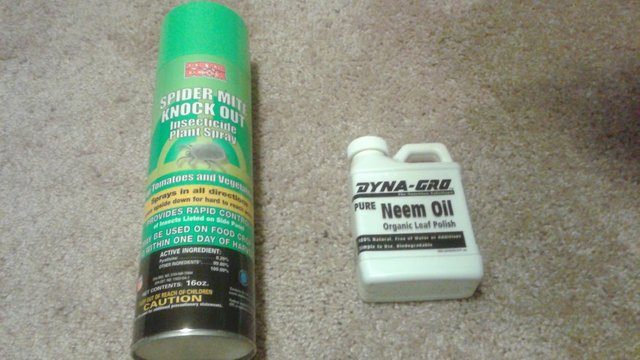
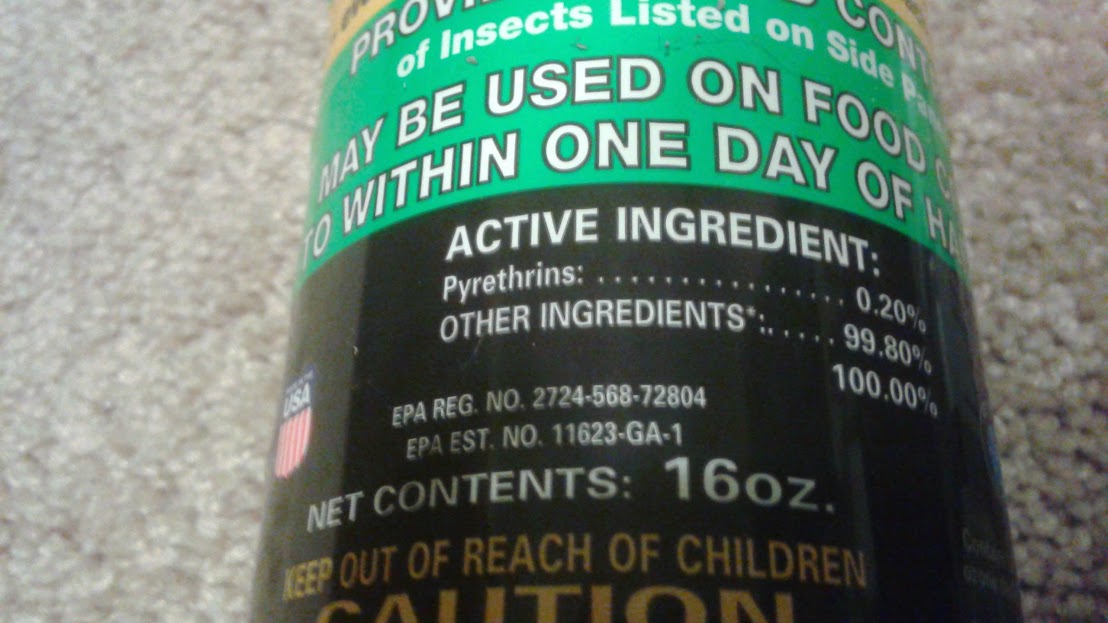
Pyrethrin is a natural insecticide that is derived from Chrysanthemums. It kills almost every kind of nasty bug on contact, and then it dissipates quickly. This stuff is not good to breath in, so I usually cover my nose and mouth with a mask, or shield my nose under my shirt. The can must say it contains pyrethrin on the ingredients, otherwise it could be a systemic toxic chemical that is hazardous to the environment and your health over time. This brand of spray is handy because you can hold it upside and sideways and it will still spray from any direction with the same amount of power. Great for spraying on all sides of leaves and along stems. Definitely spray underneath every leaf where insects love to nest. Every inch of the trees and the surface of the soil should be sprayed just to be safe. Exit the room where you spray as quickly as possible so you don't have to breath in any fumes. The smell will go away in less than an hour.
Neem oil is derived from a neem tree. It is systemic, meaning it may build up and stay in the soil for a long period of time, though I think it can break down eventually and wash out from a well draining soil. Not much of a problem if you re-pot your bonsai trees every few years like I do. Warning: this stuff really stinks like a rubber factor. The directions on my bottle say to put a couple teaspoons in a bucket with lots of warm water, and also mix in some dish soap. The oil gets clumpy and does not mix well in cold water, so the hot soapy water helps it to distribute into a more even solution. Mix it up really good. Then pour this liquid liberally through the soil of the potted trees. Let it all drain out into a catch basin. The purpose is not to drown the trees. The goal is to get every single particle of soil covered with the neem oil solution, to kill off fungus and send a message to the insects that this pot is going to smell awful from now on. After I drain out the excess water, I let my potted trees rest in the garage for a few days until they no longer smell so bad to me.
Spray with pyrethrin, water with neem oil, and wait a few days... then I bring them into my house and position them near my other houseplants. They will remain inside until Spring when the last frost of the year is over.
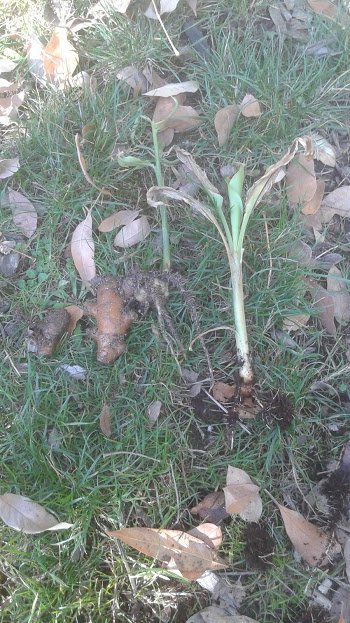
This is the ginger I dug up.
Note: I could have done the same treatment with the spray and oil, but I wanted to see if I could harvest anything and this is the best time of year to check (when the leaves start to die off in Autumn). Normally I don't use something like neem oil on anything I plan to eat. Pyrethrin is safe to use on crops, and it lists the bugs and crops it can be used on, as long as you don't harvest anything to eat the same day you spray it.
Only one of my plants had any ginger to harvest. I snapped off the big mother from the white rhizome it was growing from. Everything was rinsed until it was clean. There was even a piece of turmeric with some weak roots on it, but it had not yet grown because it was half rotten, so I clean it off and saved the good part. I cut the ginger root into three equal portions. One for cooking, and two I put in a plastic sandwich bag with the turmeric, and put it on a warm shelf in my room. I'll be watching the bagged roots over the next few weeks to see if any of them sprout. If they do, I'll put them in a pot with soil.
The remaining living plants I decided to prune off the desiccated parts, and put them into new sterile soil that I use for my indoor plants. I put coco fiber in the bottom, then I filled 80% with perlite, and then covered the top with more coco fiber. That should allow tons of space for air to get inside so things do not rot and get mucky. The coco fiber will hold onto moisture and allow water to continuously vaporize through the soil medium above it. Hopefully that will mimic a tropical micro-climate for healthy ginger to grow.
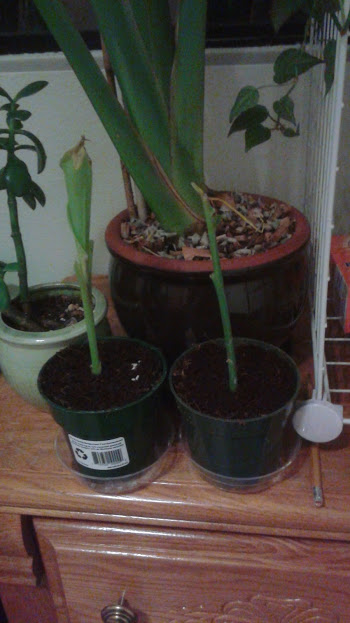
Here is where they will be for the next five months or so.
Bonus photos:
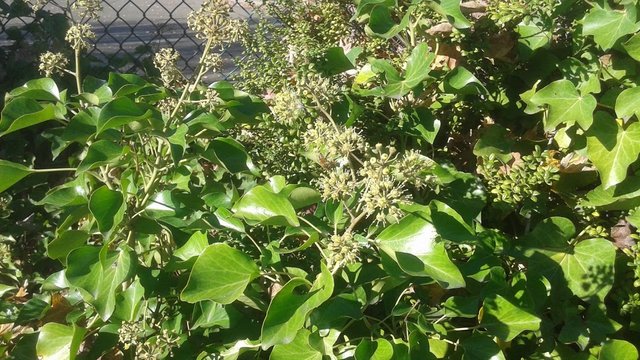
Wild Ivy at the bus station.
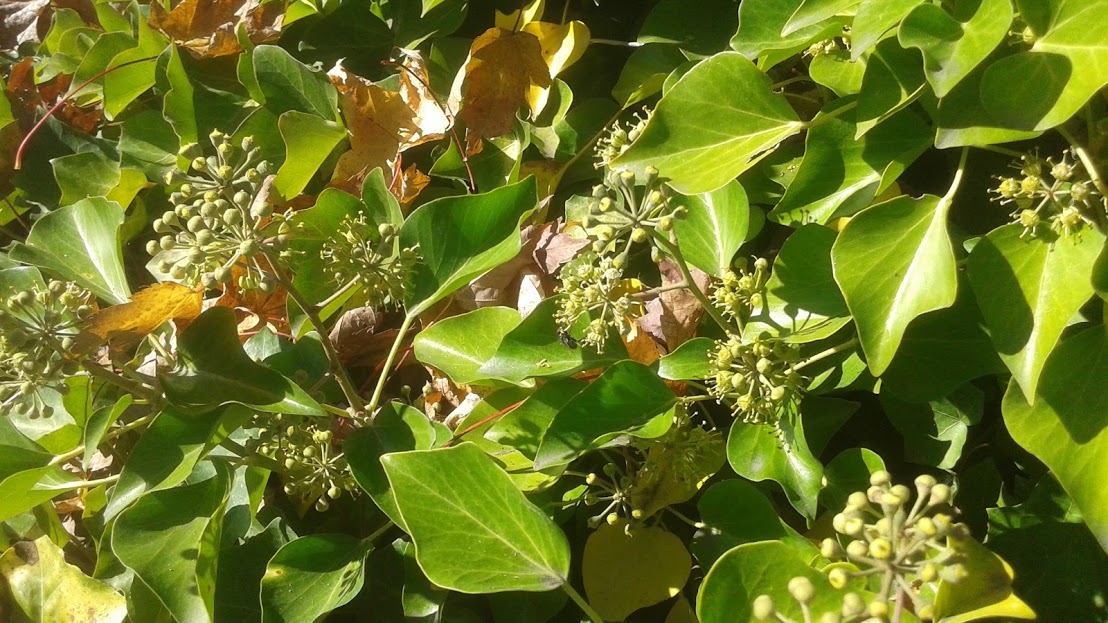
The bees were all over these flowers like it would be their last fresh meal for a long time.
Now I know why ivy is beneficial to the ecosystem.
Thanks for checking out my post.
My top cover photo for this post is from pixabay.com.
gardening is the best habit among all of habit..so you are good person to have these habit..thanks for sharing with us